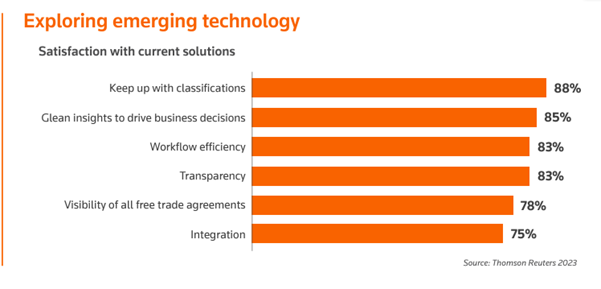A Flaw in USPTO Systems to Be Aware of and Avoid
“The USPTO should revise its systems to refuse maintenance fee payments for expired patents or give a warning if one attempts to pay a maintenance fee on an expired patent.”
Editor’s note: This article has been updated since publication with the USPTO’s response.
Is your company paying the United States Patent and Trademark Office (USPTO) maintenance fees for expired patents? The USPTO requires payment of maintenance fees to keep a granted patent in force due at 3.5 years, 7.5 years, and 11.5 years after the date of grant of a patent. For 2023, these fees amount to $2,000, $3,760, and $7,700, respectively. You may be unknowingly paying maintenance fees for expired patents.
While there are a number of cogent reasons for not paying a maintenance fee, one of the most compelling cases for not paying is if the patent in question has already expired. While the term of a patent may vary subject to certain adjustments—due to delay during prosecution, delay for approval of a patented invention by a regulatory agency, such as the Food and Drug Administration (FDA), a terminal disclaimer, etc.—most patents issued in the last 20 years have a term of either 17 years from grant or, more likely, 20 years from the application filing. If the patent claims priority to an earlier patent as a continuation or divisional application, then the effective filing date of that later filed patent is the filing date of the earliest application in the priority chain of the later filed application.
Accordingly, a patent claiming priority to an earlier patent or application may have a term that could be significantly less than 17 years after grant or 20 years from filing. Indeed, the term of such a patent claiming priority to earlier filed applications may not even reach the dates—3.5 years, 7.5 years, or 11.5 years after grant—at which time a maintenance fee would be due. If your patent has expired, for example, 10 years after the grant, it would be a waste of money to pay the 11.5-year maintenance fee.
The Problem
The USPTO, however, has a quirk in its maintenance fee payment system that does not prevent, or even warn, a patentee against paying a maintenance fee on an expired patent, even though the USPTO knows the exact day that patent will expire. To compound this problem, the USPTO requires a patentee to make a statement that the patentee agrees that the maintenance fee once paid cannot be refunded. The USPTO has no safeguard against accidental payments of maintenance fees.
This is not just a theoretical problem. In one instance, for a patent owned by a patentee known to these authors, the 11.5-year maintenance fee payment window opened April 21, 2022, but the patent expired on May 13, 2022. The USPTO accepted the maintenance fee payment on June 27, 2022, even though the patent office knew the patent was already expired. In another instance, in the same patent family, another patent payment window was listed as “open” for payment on June 27, 2022, when the patent again had expired on May 13, 2022, because it hailed from the same priority chain.
In some instances calculating the expiration date of a patent by a patentee may not be trivial. The term of a patent is generally 20 years from filing of the application on which it is based, but this term is subject to adjustment due to delay in prosecution on the part of the applicant, the USPTO, or delay by a regulatory agency involved in approving a patented product, for example, a new drug. Further, a patent may be subject to an earlier expiration date than might otherwise be expected due to a Terminal Disclaimer filed in response to a double patenting rejection during prosecution. Many patentees use automated systems for the payment of maintenance fees which may not be sophisticated enough to take all of these factors into account and to truly know whether a patent remains in force at the time a maintenance fee is due.
The USPTO, on the other hand, knows exactly when a patent will expire, as it tells you about any patent extension on the face of an issued patent itself, and if not contested within certain time limits, that date becomes absolute. Why is it then the USPTO happily accepts such “donations”?
Although the payment of a maintenance fee must be accompanied by a statement that the patentee agrees that the maintenance fee once paid cannot be refunded, the authors of this paper filed a request for refund of the mistakenly paid maintenance fee noted above on September 29, 2023. The USPTO issued the refund on January 12, 2024 even though the patentee had made the statement agreeing that the maintenance fee could not be refunded.
Put Safeguards in Place
The USPTO should revise its systems to refuse maintenance fee payments for expired patents, and give a warning if one attempts to pay a maintenance fee on an expired patent. The requirement for a patentee to make the statement agreeing that the maintenance fee once paid cannot be refunded should also be removed from the USPTO maintenance fee payment system, or at least clarified to indicate that this agreement applies only to maintenance fees paid on active patents, as, in these authors’ experience, maintenance fees mistakenly paid on expired patents can indeed be refunded.
Until the USPTO implements safeguards to prevent payment of maintenance fees on expired patents, patentees should be sure to check whether a patent is still in force prior to paying any maintenance fees on it. If your company uses an automated system for the payment of patent maintenance fees, it should include a feature to verify, prior to payment of a maintenance fee, that the patent in question has not yet expired. Do not waste your company’s money paying maintenance fees on expired patents.
The USPTO did not reply to IPWatchdog’s request for comment by the time of publication but a USPTO Spokesperson sent the following statement after publication, included below in its entirety:
Maintenance fees are not due after a patent expires, and any maintenance fee payments made after patent expiration are eligible for refund, upon request, per agency policy. If a patentee pays maintenance fees on a non-expired patent, the maintenance fee payment is not eligible for refund (see 35 U.S.C. 42(d)).
The USPTO has several mechanisms in place to guide patentees through the maintenance fee payment schedule. For example, the agency sends weekly maintenance fee reminders and notices of patent expiration, based on elapsed time from the patent issue (not filing) date, via postal mail or email, to the fee or correspondence address on record.
The USPTO website features a downloadable patent term calculator to further inform patentees and the general public on estimated expiration dates. The Patent Maintenance Fees Storefront also provides information for maintenance fee payment due dates and prompts users whose patents have expired due to nonpayment. Additionally, Manual of Patent Examining Procedure 2701 provides expiration guidance; as explained in subsection V, the term of a patent that includes a terminal disclaimer may be truncated based on the disclaimer terms. The degree of truncation may be determined only by reviewing the disclaimer itself. The storefront system is unable to calculate for terminal disclaimers and may unintentionally allow those users to pay maintenance fees on an expired patent.
The USPTO is committed to providing exceptional customer experiences for innovators across the United States and around the world. As such, we continually strive to simplify and error-proof our processes and systems. We urge all customers who believe they may have mistakenly paid maintenance fees on an expired patent to contact our Refund Branch for resolution.
Image Source: Deposit PHotos
Author: gannenko
Image ID: 689813496






